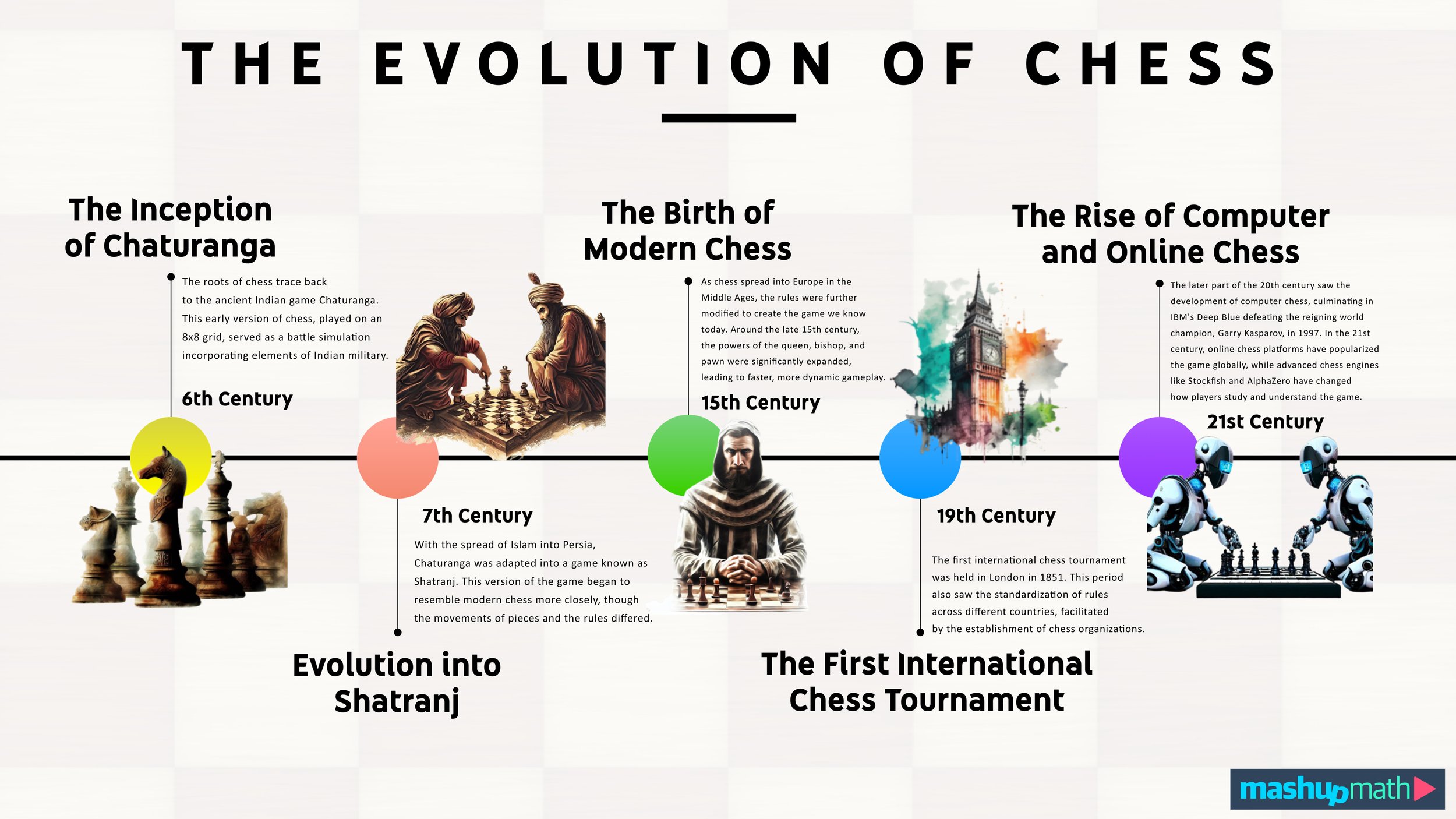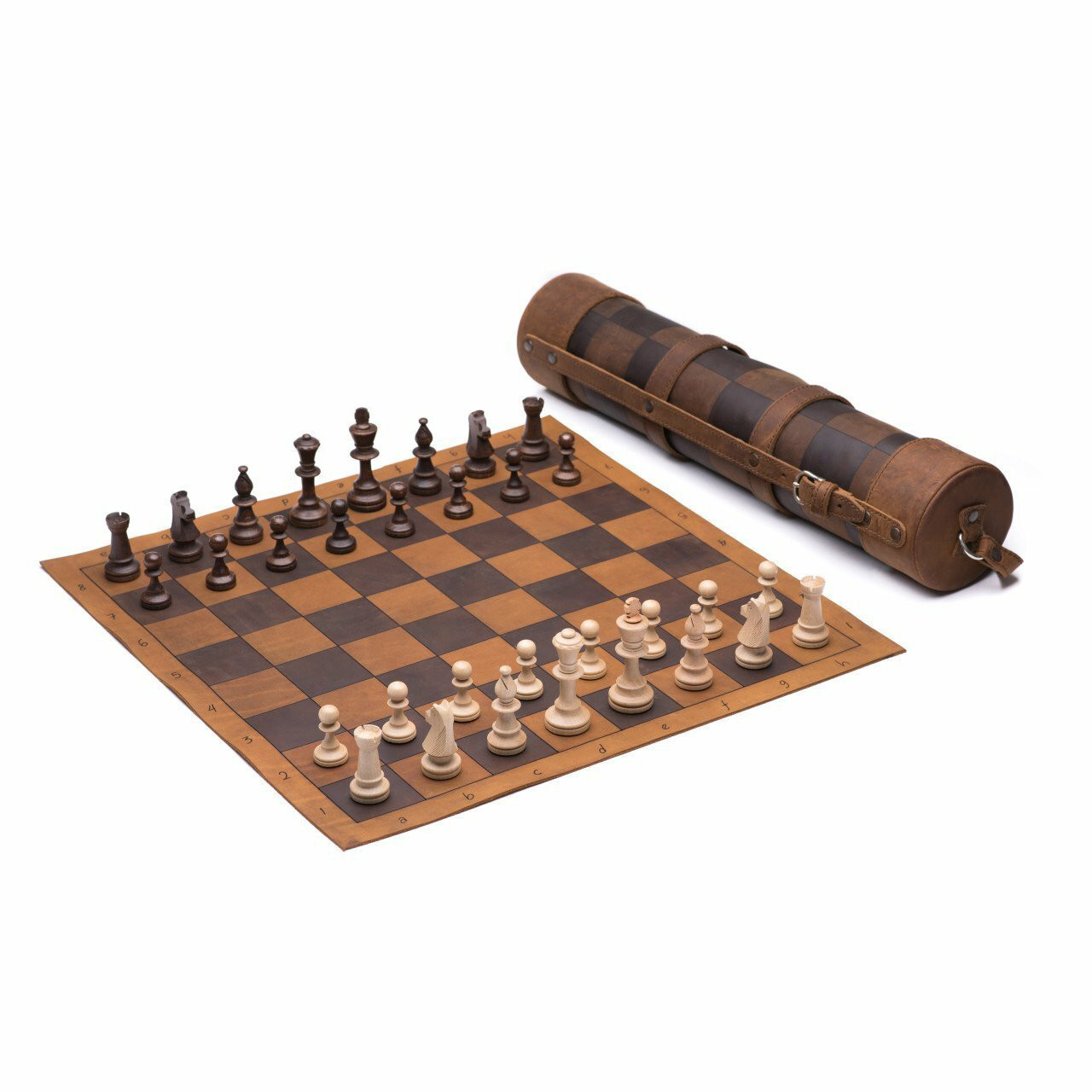Chess is an ancient game of strategy and skill. Its rules have evolved over centuries, making it the beloved game it is today.
The history of chess rules is a fascinating journey. From its origins in India over a thousand years ago to the international regulations we follow now, chess has seen many changes. Each era and culture added its own twist to the game.
Understanding how the rules developed offers insight into the rich tapestry of chess history. Dive into this captivating story of how the game was shaped and refined. Discover the milestones that turned chess into the timeless classic we enjoy today.
Origins Of Chess
The origins of chess are as captivating as the game itself. This timeless game has traveled through centuries, evolving with each culture it touched. Discover the ancient beginnings and early game rules that shaped the chess we know today.
Ancient Beginnings
Chess has a rich history. It dates back over 1,500 years. The game is believed to have originated in India during the Gupta Empire. This period was around the 6th century AD. The earliest version of chess was called “Chaturanga”. The name means “four divisions of the military”. It represented infantry, cavalry, elephants, and chariots. These units are reflected in the modern chess pieces.
From India, the game spread to Persia. Here, it became known as “Shatranj”. The Persians added their own rules and strategies. Chess continued to evolve as it moved to the Arab world. The Arabs introduced the game to Europe during the Moorish conquest of Spain. In Europe, chess underwent further transformations. Each region added its own flair and rules.
Early Game Rules
The early rules of chess were quite different from today’s game. In Chaturanga, the pieces moved differently. The game had no queen. Instead, there was a piece called the “mantri” or advisor. It moved only one square diagonally. The bishops moved two squares diagonally, leaping over intervening pieces. Pawns moved only one square forward, without the option of moving two squares initially.
During the Shatranj era, the rules continued to change. The game introduced the concept of “check” and “checkmate”. The game also defined the goal of capturing the opponent’s king. The pieces’ movements remained limited compared to modern chess. The game was slower and required a different strategy.
As chess spread to Europe, the rules evolved further. By the 15th century, significant changes occurred. The queen became the most powerful piece on the board. Bishops gained their modern diagonal movement. These changes made the game faster and more dynamic.
Understanding the origins and early rules of chess helps appreciate its rich history. The game has grown and adapted through the ages. Each change has added depth and excitement to this ancient strategy game.

Credit: cplorg.contentdm.oclc.org
Medieval Chess
The medieval period played a crucial role in the evolution of chess rules. During this era, chess moved from the East to Europe. The changes in rules and gameplay during medieval times set the foundation for modern chess.
European Influence
Chess reached Europe through trade and conquest. The game quickly became popular among the nobility. European players introduced new strategies and variations. They adjusted the rules to suit their tastes and preferences. These changes made the game more dynamic and challenging.
One significant change involved the movement of pieces. The Queen, for example, gained more power. Initially, the Queen could move only one square diagonally. Later, it could move any number of squares in any direction. This change made the game faster and more exciting.
Rule Standardization
The growth of chess in Europe led to the need for standard rules. Various regions had their own versions of the game. This caused confusion and inconsistencies during play. To address this, chess clubs and organizations started forming. They aimed to standardize the rules across different regions.
In the 15th century, the first attempts at rule standardization began. The introduction of books and written rules helped spread uniformity. Players could now enjoy a consistent and fair game. These efforts laid the groundwork for the modern rules of chess.
Modern Chess Emergence
Modern chess as we know it emerged during the Renaissance. The game underwent significant transformations, leading to the version played today. Changes in movement rules for key pieces and the standardization of regulations played a crucial role.
16th Century Changes
The 16th century brought major changes to chess. This period saw the game evolve into its modern form. Chess pieces and their movements were standardized. These changes made the game faster and more strategic.
Standard rules started to spread across Europe. Chess became popular in Spain and Italy. Players began documenting and sharing strategies. This period laid the foundation for modern chess tournaments.
Queen And Bishop Movements
The most significant changes affected the queen and bishop. Previously, the queen was a weak piece. She could only move one square at a time. In the 16th century, her movement was expanded. She became the most powerful piece, able to move any number of squares in any direction.
The bishop’s movement also changed. Bishops could now move any number of squares diagonally. This increased their strategic importance. These changes made the game more dynamic and exciting. Players had to adapt to new strategies and tactics.
19th Century Advancements
The 19th century brought significant changes to the rules of chess. These changes shaped the modern game. Key advancements included the introduction of timed games and international tournaments. Let’s delve into these exciting developments.
Timed Games Introduction
In the early 19th century, chess games had no time limits. This led to long, drawn-out matches. To address this, chess clocks were introduced.
These clocks ensured each player had a set time to make all their moves. The first recorded use of a chess clock was in 1861. It added a new level of strategy. Players had to manage their time wisely.
By the late 19th century, timed games became standard in tournaments. This change made the game more dynamic and exciting. It also reduced the length of matches.
International Tournaments
Before the 19th century, chess was mostly a local affair. Players competed within their own regions. This changed with the first international tournament in 1851, held in London.
This event attracted the best players from around the world. It set the stage for future international competitions. The tournament format became more structured, with clear rules and regulations.
In 1886, the first official World Chess Championship took place. Wilhelm Steinitz won, becoming the first World Chess Champion. These tournaments increased the popularity of chess globally.
| Year | Event | Significance |
|---|---|---|
| 1861 | Introduction of Chess Clocks | Added time management to the game |
| 1851 | First International Tournament | Global competition among top players |
| 1886 | First World Chess Championship | Established official World Chess Champion |
These advancements in the 19th century laid the foundation for modern chess. Timed games and international tournaments are now essential elements of the game. They continue to challenge and inspire players worldwide.
20th Century Innovations
The 20th century saw significant changes in chess rules and organization. These changes made the game more standardized and competitive. Let’s explore two major innovations of this era.
Fide Formation
In 1924, the Fédération Internationale des Échecs (FIDE) was founded in Paris. FIDE became the official governing body of chess. It aimed to organize and regulate chess tournaments worldwide. FIDE’s formation brought a unified set of rules. These rules were accepted globally. This helped in reducing confusion and disputes during games. The organization also started awarding titles like Grandmaster and International Master.
Elo Rating System
In 1960, the ELO Rating System was introduced. Created by Arpad Elo, this system measures a player’s skill level. It replaced the older, less accurate ranking methods. The ELO system calculates ratings based on game results. Winning against a higher-rated player gives more points. Losing to a lower-rated player results in losing more points. This system provides a fair and dynamic way to rank players. It is still used today by FIDE and online chess platforms.
Digital Era
The Digital Era has transformed many traditional games, including chess. With the rise of the internet, chess has evolved significantly. The game is now more accessible, engaging, and competitive. Let’s explore how this digital transformation has impacted chess rules and gameplay.
Online Chess Platforms
Online chess platforms have revolutionized the way people play chess. Players from around the world can now compete with each other anytime, anywhere. Some of the most popular platforms include:
- Chess.com: Offers a variety of game modes and tutorials.
- lichess.org: A free and open-source platform.
- Playchess.com: Known for its professional tournaments.
These platforms have introduced new rules and formats to make the game more exciting. For example, blitz and bullet chess games have become very popular. These are fast-paced games with shorter time controls, adding a new layer of strategy and excitement.
Online platforms also provide tools for learning and improvement. Players can access puzzles, tutorials, and analyze their games. This democratizes access to high-level chess resources, making it easier for players of all levels to improve.
Computer Analysis Impact
The impact of computer analysis on chess cannot be overstated. Powerful engines like Stockfish and AlphaZero have changed the way the game is played and studied. These engines can analyze millions of positions per second, offering deep insights into the game.
Computer analysis has several key impacts:
- Improved Preparation: Players can prepare for opponents by analyzing their previous games.
- Opening Theory: New opening moves and strategies are discovered.
- Error Detection: Players can find and learn from their mistakes more easily.
This has led to a deeper understanding of chess positions and strategies. Players now have the tools to study games in ways that were not possible before. This has raised the overall level of play and made games more competitive and exciting.
In summary, the Digital Era has brought significant changes to chess. Online platforms and computer analysis tools have made the game more accessible, competitive, and engaging. This period marks an exciting chapter in the history of chess rules and gameplay.
Major Rule Revisions
Chess has evolved significantly over centuries. The rules we know today were not always the same. Different cultures contributed their own unique changes. Some of the most important changes are known as major rule revisions. These changes helped shape modern chess. Let’s explore some key revisions.
En Passant Rule
The En Passant rule is a special pawn capture. It started in the 15th century. It allows a pawn to capture another pawn that moves two squares. The capturing pawn must be next to the moved pawn. This capture can only happen right after the move. If not taken immediately, the chance is gone. This rule prevents players from escaping a pawn’s capture.
Castling Rights
Castling is a unique move in chess. It involves the king and a rook. Both pieces move at the same time. The king moves two squares towards the rook. The rook moves next to the king. This move helps protect the king. Castling has specific conditions. The king and rook must not have moved before. There should be no pieces between them. The king cannot castle out of, through, or into check. This rule adds strategic depth to chess.

Credit: www.mashupmath.com
Future Of Chess Rules
The future of chess rules holds a lot of excitement. The game of chess has always evolved. It will continue to do so. As technology advances, it influences how we play and understand chess. Let’s explore some potential changes and the role of technology in shaping future chess rules.
Potential Changes
Chess rules may see new adjustments. These changes could address game length, player interaction, or even board dimensions. Shorter game formats might become popular. Blitz and rapid games are already gaining traction. Changes may aim to attract a younger audience. This could make the game more accessible.
There is also talk of introducing new pieces. This idea is still in its infancy. New pieces could change the dynamics of the game. They could also add new layers of strategy. Existing rules might adapt to accommodate these changes. Rule changes can keep the game fresh and engaging.
Technological Integration
Technology plays a major role in modern chess. Online platforms have made chess more accessible. Players can compete with others from around the world. This has led to new rule considerations. Fair play policies are evolving. These rules aim to prevent cheating using computer assistance.
Artificial intelligence is another big influence. AI can analyze games and suggest improvements. It can also help in training new players. Virtual reality might offer immersive chess experiences. This can change how we interact with the game. Technology will continue to shape chess rules.

Credit: www.facebook.com
Conclusion
Chess rules have evolved over centuries. They shaped the game we know today. Every change added depth and excitement. Players now enjoy more strategic possibilities. Understanding these rules helps improve your gameplay. It also deepens your appreciation of chess history.
Learning these changes can be fun and enlightening. So, keep exploring the world of chess. Discover its rich past and intriguing rules. Enjoy every move and every game. Happy playing!








One Response
Some really nice stuff on this site, I enjoy it.